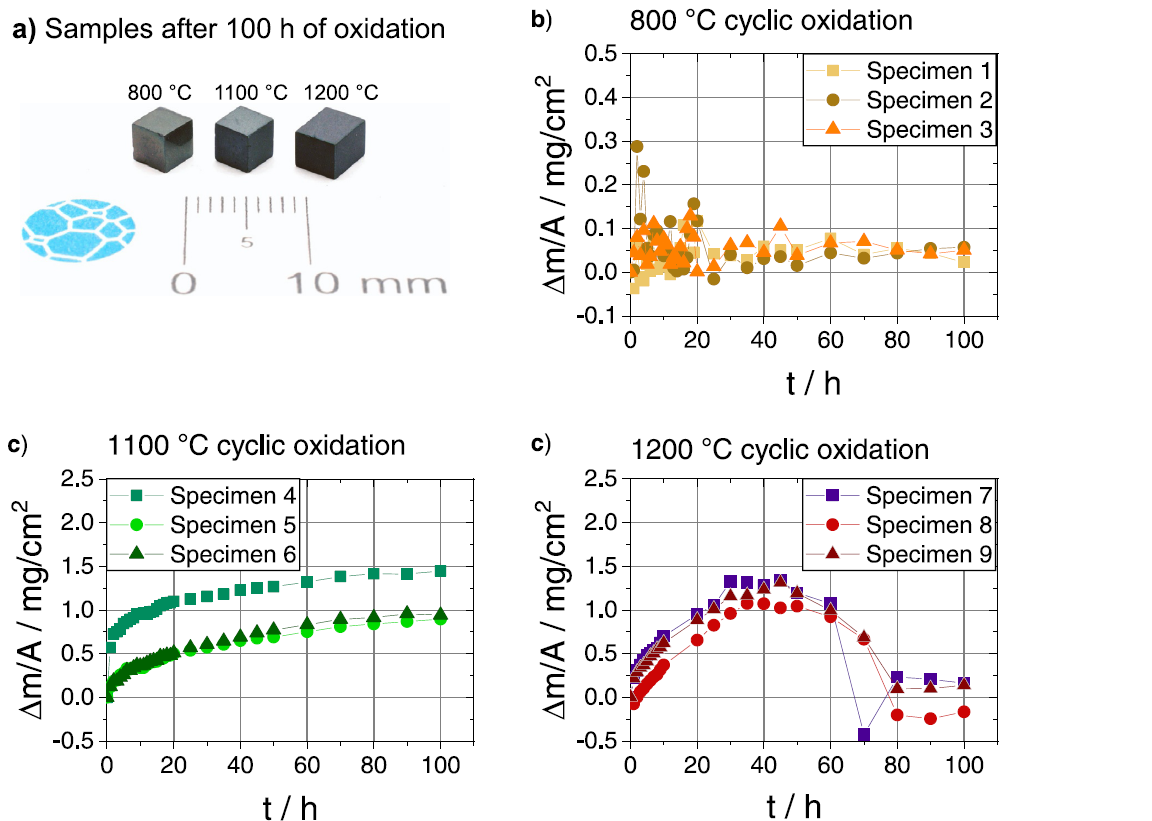F. Hinrichs, A. Kauffmann, A. Srinivasan Tirunilai, D. Schliephake, B. Beichert, G. Winkens, K. Beck, A.S. Ulrich, M.C. Galetz, Z. Long, H. Thota, Y. Eggeler, A. Pundt, M. Heilmaier
Corrosion Science 207 (2022), 110566, DOI: 10.1016/j.corsci.2022.110566

Cr-13.5Si-32.2Mo (at%) solidifies as metastable σ-phase with a dendritic microstructure during arc melting. Heat treatment leads to a decomposition into a fine-lamellar microstructure of (Cr,Mo)ss and (Cr,Mo)3Si. A protective Cr2O3 layer with low growth rates was formed upon cyclic oxidation at 800, 1100 and 1200 °C for up to 100 h. In addition to the Cr2O3 layer, the formation of an internal silicon oxide layer is found for 1200 °C. Oxide scales show parabolic growth rates at 1100 and 1200 °C. Up to 100 h, the oxidation occurred remarkably free of nitridation, spallation or pesting.